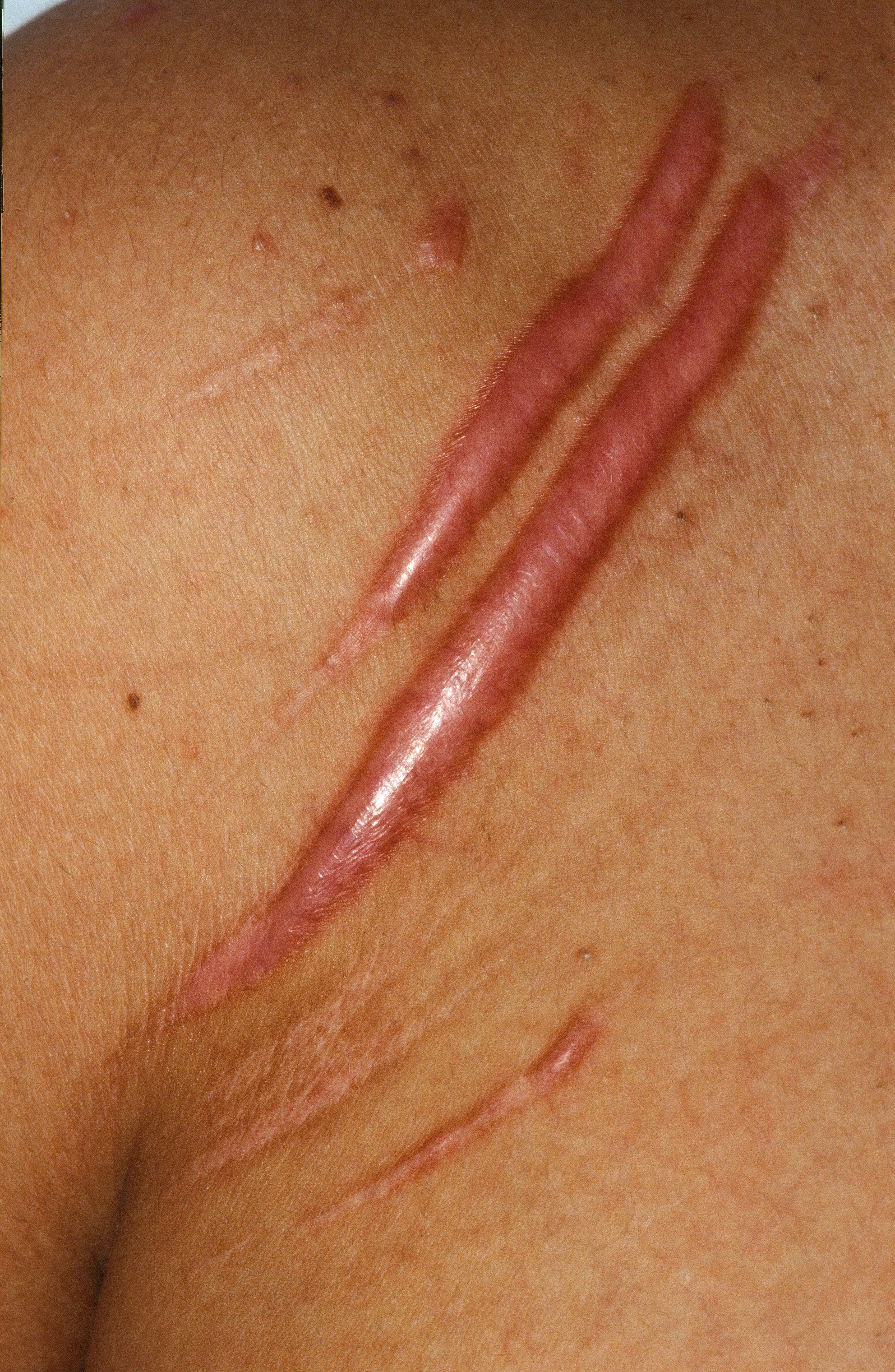
HYPERTROPHIC SCAR
A hypertrophic scar is the elevated and excessive growth of fibrous tissue within but not extending beyond the bounds of a scar is characteristic. Keloids by definition extend beyond the area of injury.
- Hypertrophic scars usually resolve over time whereas keloids do not.
Clinical
A thickened, raised scar is seen. There is no epidermal change. The thickening is dermal. The lesion is usually red.
RegionalDerm
Homepage | Who is Dr. White? | Privacy Policy | FAQs | Use of Images | Contact Dr. White
It is not the intention of RegionalDerm.com to provide specific medical advice, diagnosis or treatment. RegionalDerm.com only intends to provide users with information regarding various medical conditions for educational purposes and will not provide specific medical advice. Information on RegionalDerm.com is not intended as a substitute for seeking medical treatment and you should always seek the advice of a qualified healthcare provider for diagnosis and for answers to your individual questions. Information contained on RegionalDerm.com should never cause you to disregard professional medical advice or delay seeking treatment. If you live in the United States and believe you are having a medical emergency call 911 immediately.
